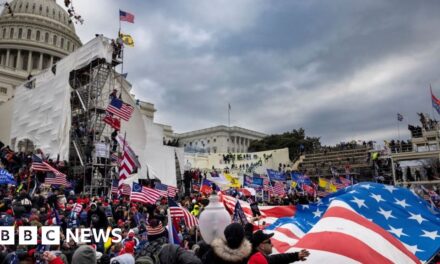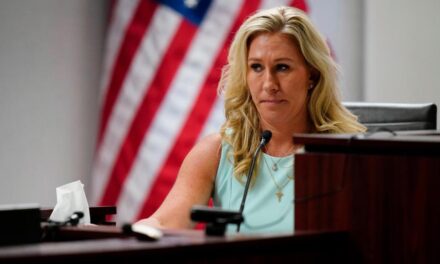
Opinion: How Geraldine Ferraro and Sarah Palin set the stage for Kamala Harris
In the history of televised vice presidential debates, two stand out for the enormous audience they drew: the 1984 contest between George H.W. Bush and Geraldine Ferraro, and the 2008 contest between Joe Biden and Sarah Palin. The Bush-Ferraro meeting was the most highly watched event in VP debate history, until it was surpassed by the Palin-Biden matchup.
Besides the possibility that the Pence-Harris debate will draw huge ratings, too, the faceoff will also feature a dynamic similar to its 1984 and 2008 predecessors: a female candidate squaring off against a male counterpart. Harris faces a challenge that many other women in politics have confronted: the need to be tough on the issues while still being likable enough to appeal to voters — an expectation that few male politicians ever face.
For Harris to win the debate on Wednesday, she will likely need to triangulate herself between the toughness of a Ferraro and the likability of a Palin.
Will this week’s debate prove the third time’s a charm for a woman running for vice president? Let’s look back at these two VP contests for a preview of what may be to come:
1984: Geraldine Ferraro vs George H.W. Bush
In 1984, Ronald Reagan was seeking reelection and running against Democratic nominee Walter Mondale, the former vice president to Jimmy Carter. To gain ground against the popular Reagan, Mondale made history by choosing then-Congresswoman Ferraro of New York. He hoped to appeal to women, many of whom were alienated by Reagan.
From the outset, Ferraro, who had a reputation for being a strong and serious politician, faced blatant sexism. The media questioned her credibility as a candidate and probed her background. The issue of her husband’s financial dealings, including the release of his tax returns, also dogged her during the campaign. Bush’s wife, Barbara Bush, described Ferraro this way: “I can’t say it, but it rhymes with rich.” (She later called to apologize, but the snafu made “Saturday Night Live”).
In her debate with Bush, Ferraro had to walk a fine line between appearing too assertive and not assertive enough. Before the debate, the Bush camp pronounced her “too bitchy.” But she came out swinging against Reagan’s record as president: “I’ll become a one-woman truth squad,” she promised, “and we’ll start tonight.”
Bush defended Reagan, but he also veered into male chauvinism. In one infamous episode from the debate, he resorted to flagrant mansplaining when he said: “Let me help you with the difference, Mrs. Ferraro, between Iran and the embassy in Lebanon.”
Ferraro was outraged and shot back in an apparently unrehearsed line: “Let me just say, first of all, that I almost resent, Vice President Bush, your patronizing attitude that you have to teach me about foreign policy.”
As if this weren’t bad enough, Ferraro also faced down oblivious journalists. A reporter at the debate asked if she thought the Soviets “might be tempted to try to take advantage of you simply because you are a woman.”
Viewers who watched the debate generally awarded victory to Bush, and the election results in November yielded a landslide for the Republican ticket. But Ferraro had broken new ground and paved the way for future women to run on a major party ticket.
“The real test of my candidacy will come,” Ferraro concluded in her 1985 memoir, “when the next woman runs for national office.”
2008: Sarah Palin vs. Joe Biden
John McCain’s decision to select Palin as his running mate worried Barack Obama and Joe Biden’s team. The young governor of Alaska exuded folksy charm, with colorful lines about hockey moms, Joe Sixpack, and a ringing catchphrase, “You betcha!”
But Palin also capitalized on being only the second female vice presidential candidate of a major party. Building on the momentum of Hillary Clinton’s historic 2008 Democratic primary run, she declared, “the women of America aren’t finished yet.”
Like Ferraro, Palin faced pressures unique to women. Even though Palin dismissed the notion that sexism was working against her, she later faced intense scrutiny over the cost of her campaign wardrobe. Palin struck back, as Clinton had done before her, and decried the “double standard” at work in what some called “Wardrobegate.”
A disastrous interview with Katie Couric, in which she seemed unprepared for office, aired only days before the VP debate. And even though Palin overshadowed the veteran senator from Delaware and drew far larger crowds at political rallies, she faced low expectations ahead of the debate.
The debate started off calmly enough, and Palin stuck to her campaign messaging, portraying herself as a Washington outsider who formed part of a “team of mavericks” with running mate John McCain. Biden tried to lump McCain together with the Bush administration, and Palin questioned Obama’s readiness to be president.
There was noticeable tension when the topic turned to how each candidate might act as president. Biden echoed Ronald Reagan’s famous rhetorical question of 1980, when he asked voters to consider if President George W. Bush’s “administration has made them better off in the last eight years.”
Palin’s rejoinder? One of most memorable lines of the debate: “Say it ain’t so, Joe, there you go again pointing backwards again.” Even Biden couldn’t help himself from laughing.
Almost 70 million viewers tuned in to watch, setting a record for VP debates and surpassing the viewership of each of the three debates between Obama and McCain. While many thought Palin’s performance exceeded expectations, this did not prevent the popular entertainment media from mocking her.
In subsequent years, Palin embraced the significance of her candidacy for women running for national office, even offering advice to Harris when she was selected as Biden’s running mate. She has also proven herself an enduring figure in American popular culture and has hinted at a Senate run in 2022.
As Ferraro once said, “Every time a woman runs, women win.” Harris — the first Black and South Asian woman to appear on a major party ticket — has already broken barriers for generations of women of color to come. And if the response to the prior VP debates of 1984 and 2008 are any indication, millions of Americans will tune in to watch her in action.


















